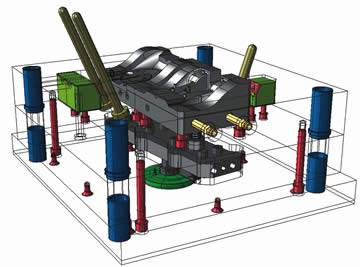Mold Design Inclusion in an Innovative Composites & Polymer Materials Education
Graduates of the CCSU Composite & Polymer Materials Engineering Technology program find themselves more than equipped to work as members of engineering teams in the aerospace, composites and plastics molding or manufacturing industries.
At Central Connecticut State University, the Composites and Polymer Materials (C&PM) program is an innovative curriculum leading to a Bachelor of Science degree in engineering technology. Engineering technology differs from engineering by the level of mathematics and physics (Calculus I, II and University Physics I, II) and by the emphasis on applied technology. University faculty, together with an Industrial Advisory Board, (IAB) created the program to provide qualified graduates for the plastics and polymer composites manufacturing industry, as well as to provide opportunity for industrial personnel to update skills in a rapidly advancing discipline.
Integration is the basis for the program's design and curriculum flexibility. The C&PM program integrates disciplinary areas such as chemistry, applied mechanics and materials analysis, with specialized courses such as mold design, plastics and composite manufacturing processes and design analysis. Course content covers theory and application, laboratory experiments using industrial machine tools, testing equipment and computer software to provide in-depth knowledge within the plastics and composites discipline.
Introduction
Plastics and composites, mold design and moldmaking are a natural extension of the established engineering technology programs at Central Connecticut State University (CCSU). Since 1849, the institution has historical significance having evolved as one of the first schools for preparing teachers for public school systems, offering courses in the manual arts, and applied technology for teachers. The institution has demonstrated a strong tradition of practical application and in 1982 the engineering technology programs evolved from technology education and industrial technology.
Connecticut has a diverse manufacturing industry—from aerospace to sporting goods to commercial products—with the plastics molding firms playing a major role in the state's economy. Aware of the dynamic aspects of the industry, the School of Technology at CCSU has established an IAB with representatives from major industries (Pratt & Whitney Aircraft, Sikorsky Aircraft, Hamilton Sundstrand, IBM Global Services and Prototype & Plastics Mold Company, Henkel Loctite and others) to advise faculty with the development of quality programs and curriculum.
This IAB contributes as a team to develop an analytical and applied technical curriculum in C&PM. Leading to a Bachelor of Science degree, the program prepares technologists for the plastics processing, moldmaking, manufacturing and aerospace industries.
CCSU offers a number of Bachelor of Science degree programs including those in manufacturing management, and manufacturing and mechanical engineering Technology. In 1998, the C&PM engineering technology program emerged as an interdisciplinary curriculum integrating courses from the existing engineering technology programs to address the needs of clients—the industry and the students.
A major aspect of implementing educational programs is the logistics of offering courses, laboratory equipment and enrollment, which can often be cost-prohibitive. By integrating courses from disciplinary areas, the curriculum is not only flexible, but also an effectual use of available resources.
Program Curriculum
Curriculum within the engineering technology department at CCSU can be divided into three main components: general education, major technical specialties and additional technical supporting coursework. The entirety of each 130 credit-hour program culminates in a capstone engineering technology senior project.
Under general education, the university provides students with the basic educational foundations seeking to realize several objectives: develop an appreciation for the arts and humanities, foster awareness of the social and behavioral sciences, enhance personal communication skills, strengthen quantitative skills and develop scientific understanding of our natural world. The mathematics (quantitative) and sciences requirements of general education have been specifically geared toward the engineering technology needs for certain technical sciences. In accredited baccalaureate programs, a sequence in calculus is the required level of mathematical proficiency. The science requirement is sufficiently addressed by a physics sequence which is advantageous as a prerequisite in subsequent engineering mechanics and thermodynamics courses. C&PM engineering technology students also are required to complete a set of chemistry courses culminating with organic chemistry, the backbone of polymeric material studies.
Many of the major technical specialty courses are shared among several engineering technology programs. Included is an introduction to engineering technology, a grouping of applied mechanics courses (statics, dynamics, strength of materials, thermodynamics and finite element analysis), an array of design courses—technical drafting, geometric dimensioning and tolerancing, CAD, computer-integrated manufacturing (CIM), machine design, solid modeling, design for manufacture—a materials analysis course, and a course in engineering economy. C&PM engineering technology program-specific specialty courses are: manufacturing with plastics and composites, plastics and composites tool design, and composite design and analysis.
Additional supporting technical coursework uses resources from other departments to provide background in information processing, computer programming, electrical circuits, statistics and continuous process improvement.
C&PM Technical Courses
C&PM processes is an analytical study of thermoplastics, thermosets and polymer matrix composite materials. It also looks at the manufacturing processes used within the plastics and composite molding and fabrication industry. This is a laboratory course using standard materials testing equipment (see Figure 1), industrial equipment and introducing problem solving to technical applications. Typical laboratory experiences include the setup, operation and trouble-shooting of plastics molding processes on an Arburg Allrounder® 220-75-250 injection molding machine (see Figure 2) and a Carver Monarch™ 50-ton compression molding press (see Figure 3), as well as blow molding (BM), vacuum thermoforming and other machine tools. It introduces elements of basic molds and dies for the various processes, including mold materials and components, principles of runner systems, gating, venting and mold fill.
Plastics and composites tooling design introduces the principles for design of molds and tooling for the production of plastics and composite products. The course uses solid modeling CAD software (Pro/ENGINEER® and Unigraphics®) to design molds for injection molding (IM), BM, compression molding and thermoforming processes (see Figures 4 and 5).
The principles of mold design and moldmaking for injection molds, blow molds, compression and transfer molds are addressed, as well as for thermoforming, vacuum forming, RIM and RTM molds. The course analyzes specifics relative to the design and operation for the numerous types of molds, runner and manifold systems, gating systems, venting, cooling and temperature control systems, ejection and knock systems. Also discussed are materials for the moldmaking and toolmaking processes, equipment and methods for mold construction.
Students use solid modeling software to design tooling or molds for the laboratory equipment. Standard D-M-E™mold bases and components are integrated into the design process, with analysis of projected area and volumetric press capacity, temperature control and cooling, runner, gating and venting, shrinkage, surface finish, core and ejector requirements.
Composite design and analysis is aimed at providing students with the analysis techniques and tools for dealing with and designing composite structures. To optimally design composite parts, a thorough review of available constituent materials and the methods of their possible consolidation are required. The various manufacturing and molding processes offer certain advantages and limitations and also impact resultant composite properties. In composite design the student's knowledge base of general isotropic materials is expanded through classical composite theory to account for the anisotropic nature of materials typically encountered in composites. Elements of composite micromechanics, macromechanics, ply mechanics, stiffness and strength design and failure criteria are employed together with computational software to design composite sheet, plate, beam and shell structures.
Engineering technology senior project is a capstone course in which students participate on a teamwork project to study, design, and/or research a project as engineering technologists. Final reports are submitted to the department for archiving, and oral presentations are required. Projects may originate from student, instructor and/or industrial partner.
The moldmaking tasks may often be performed within the context of this course. Students apply experiences and knowledge acquired throughout the program to a research project; they work as teams to develop a technical system or mechanism, such as to manufacture a mold. CNC machine tools are used to manufacture cavity inserts and components for standard D-M-E™ mold bases (see Figure 6).
Summary
Graduates of the CCSU C&PM engineering technology program generally function as members of engineering teams in the aerospace, composites and plastics molding or manufacturing industries. Responsibilities may involve design, development, testing and analysis of products and tooling, as well as operation of manufacturing systems for the production of aerospace, automotive, sporting and commercial products. This program is enhanced by the inclusion of a mold design and moldmaking emphasis in the technical specialty courses. The curriculum will continuously improve through on-going university assessment processes and IAB guidance.
Related Content
How to Select a Mold Temperature Controller
White paper shares how cooling channel analysis, which collects maximum pressure drop, total flow rate and heat dissipation, eases the performance evaluation of mold temperature controllers.
Read MoreLeading Mold Manufacturers Share Best Practices for Improving Efficiency
Precise Tooling Solutions, X-Cell Tool and Mold, M&M Tool and Mold, Ameritech Die & Mold, and Cavalier Tool & Manufacturing, sit down for a fast-paced Q&A focused on strategies for improving efficiencies across their operations.
Read MoreWhat Is Scientific Maintenance? Part 1
Part one of this three-part series explains how to create a scientific maintenance plan based on a toolroom’s current data collection and usage.
Read MoreTolerancing in Mold Design, Part 2: Using GD&T to Address Conventional Tolerancing Issues
Mold designers can achieve a single interpretation of workpiece functionality when following the American Society of Mechanical Engineers Geometric Dimensioning and Tolerancing standard.
Read MoreRead Next
A Specialized Mold Design Strategy
Solving complex mold design challenges with specialized CAD software.
Read MoreHow to Use Continuing Education to Remain Competitive in Moldmaking
Continued training helps moldmakers make tooling decisions and properly use the latest cutting tool to efficiently machine high-quality molds.
Read MoreHow to Use Strategic Planning Tools, Data to Manage the Human Side of Business
Q&A with Marion Wells, MMT EAB member and founder of Human Asset Management.
Read More
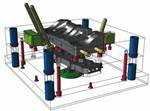


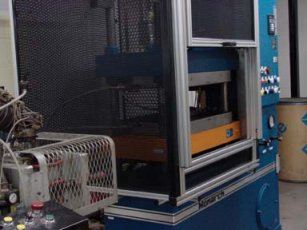
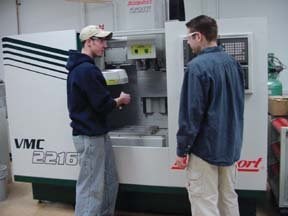
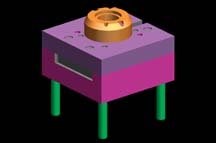
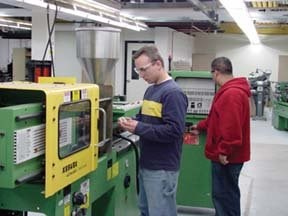

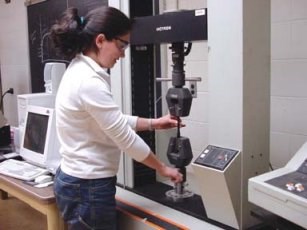







.jpg;maxWidth=300;quality=90)







